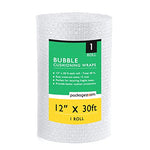You have no items in your shopping cart.
Maggots, those squirming and wriggling larvae that evoke a sense of disgust in many, have long been a topic of curiosity and fascination. But have you ever wondered how these tiny creatures appear seemingly out of nowhere? In this comprehensive article, we will delve into the intriguing world of maggots, exploring the factors that contribute to their appearance, their life cycle, and potential preventive measures. So, let's unravel the mysteries and discover the truth behind the question, "How do maggots appear?"
1. The Marvel of Maggots
Maggots, the larval stage of flies, have a remarkable ability to thrive in diverse environments. These small, legless creatures possess a unique set of characteristics that allow them to adapt and survive in different conditions. From their impressive reproductive capabilities to their role in decomposition, maggots have fascinated scientists and entomologists for centuries.
2. Understanding Maggot Infestation
Maggot infestation occurs when flies lay their eggs in favorable environments, providing an abundant food source for the hatching larvae. While the mere thought of a maggot infestation may repulse you, it is crucial to understand the underlying causes to effectively prevent and address the issue.
3. The Life Cycle of Maggots
To comprehend how maggots appear, we must first examine their life cycle. Understanding the stages of development can shed light on their sudden emergence. The life cycle of maggots consists of four primary stages: egg, larva, pupa, and adult fly. Each stage plays a crucial role in the continuation of their species.
4. Environmental Conditions for Maggot Infestation
Maggots require specific environmental conditions to thrive and develop. The combination of factors such as temperature, humidity, and food availability greatly influences their appearance and growth. Let's explore these conditions and understand why certain places are more prone to maggot infestation.
5. Maggots and Decomposition
Maggots are nature's decomposers, playing a vital role in breaking down organic matter. They feed on decaying material, aiding in the natural recycling process. Understanding their connection to decomposition helps us recognize the environments where maggots are most likely to appear.
6. Common Sources of Maggot Infestation
Maggots can infest various places, ranging from our homes to outdoor spaces. Identifying the common sources of maggot infestation is crucial in effectively dealing with these unwanted visitors. Let's explore the usual suspects and understand how to address each situation.
7. Food Storage: A Breeding Ground for Maggots
Improper food storage is a notorious culprit when it comes to maggot infestation. Leaving food exposed or failing to seal containers properly can attract flies, leading to the deposition of eggs and subsequent maggot appearance. Let's delve into the details of food storage practices that can contribute to this issue.
8. Garbage Bins and Maggot Infestation
Garbage bins can quickly become breeding grounds for flies, attracting them with the promise of a readily available food source. Understanding how to manage garbage bins and prevent fly access is crucial in preventing maggot infestation in residential and commercial settings.
9. Pet Waste: An Attraction for Maggots
If you have pets, you may have encountered maggot infestation in their waste. Animal feces, if not promptly cleaned, can attract flies and provide an ideal environment for maggot development. Let's explore effective strategies for managing and preventing maggot infestation in pet waste.
10. Maggots in Outdoor Spaces
Outdoor spaces, such as gardens and compost piles, can also fall victim to maggot infestation. Understanding the contributing factors and implementing preventive measures can help you maintain a maggot-free environment while enjoying the beauty of nature.
11. Maggots in Animal Carcasses
The sight of maggots on animal carcasses can be unsettling, but it is a natural part of the decomposition process. Understanding the role of maggots in breaking down carcasses can provide insight into their appearance and the importance of proper disposal.
12. Maggots in Wounds and Infections
In some cases, maggots can infest wounds and infections, exhibiting a rather peculiar but beneficial phenomenon. Maggot therapy, also known as larval therapy, has been used for centuries to promote wound healing. Let's explore this unique aspect of maggot appearance and its medical implications.
13. Maggot Infestation in Agriculture
Maggots can wreak havoc on agricultural crops, causing significant damage and economic losses. Understanding the factors contributing to maggot infestation in agriculture is crucial for farmers and gardeners alike. Let's dive into the world of agricultural maggot pests and explore preventive measures.
14. Can Maggots Appear Without Flies?
You might be wondering if maggots can appear without the presence of flies. While flies are the primary source of maggot infestation, there are certain scenarios where maggots can seemingly appear out of thin air. Let's unravel this mystery and discover the truth behind maggot appearance.
15. Preventing Maggot Infestation
Prevention is undoubtedly the best approach when it comes to maggot infestation. By implementing proactive measures, you can significantly reduce the likelihood of encountering these unwelcome visitors. Let's explore effective strategies for preventing maggot infestation in various scenarios.
16. Effective Cleaning Practices
Maintaining cleanliness and hygiene is crucial in preventing maggot infestation. Regular cleaning routines and proper waste management can go a long way in keeping flies at bay. Let's delve into the cleaning practices that can help you create an environment unfavorable for maggots.
17. Proper Food Storage Techniques
To prevent maggot infestation in your kitchen and pantry, it's essential to adopt proper food storage techniques. From sealing containers to organizing shelves, small changes can make a big difference. Let's explore practical tips for keeping your food maggot-free.
18. Garbage Disposal and Prevention
Proper garbage disposal is paramount in preventing maggot infestation. By adopting responsible waste management practices, you can minimize fly activity and reduce the chances of maggots appearing in your trash. Let's discover effective methods for garbage disposal and preventing fly infestation.
19. Pet Waste Management
Managing pet waste is not only crucial for sanitation but also for preventing maggot infestation. By implementing proper pet waste management techniques, you can ensure a clean and maggot-free environment for both you and your furry friends. Let's explore the best practices in pet waste management.
20. Pest Control Measures
When preventive measures alone are not sufficient, pest control measures can help address a maggot infestation. From natural remedies to professional assistance, various options are available to combat this issue. Let's explore the pest control measures suitable for different situations.
21. Natural Remedies for Maggot Infestation
If you prefer eco-friendly and natural approaches, several remedies can help deter flies and control maggot infestation. These remedies often utilize common household ingredients and are safe for both humans and pets. Let's explore natural remedies to keep maggots at bay.
Frequently Asked Questions (FAQs)
FAQ 1: How long does it take for maggots to appear?
Maggots typically appear within 24-48 hours after flies lay their eggs. The time may vary depending on factors such as temperature and food availability.
FAQ 2: Can maggots survive in extreme temperatures?
Maggots are remarkably resilient and can survive in a wide range of temperatures. However, extreme heat or cold can hinder their development and survival.
FAQ 3: Do maggots pose any health risks to humans?
While maggots are generally not harmful to humans, they can indicate unsanitary conditions and potential health risks. It's crucial to address the underlying issues to maintain a clean and healthy environment.
FAQ 4: Can maggots infest live animals?
Maggots can infest live animals, particularly those with open wounds or underlying health conditions. Prompt veterinary care is essential to prevent complications and address the infestation.
FAQ 5: Are all maggots the same?
No, there are various species of flies, each with their unique type of maggot. The appearance and behavior of maggots can differ depending on the fly species.
FAQ 6: How can I differentiate between a maggot and a worm?
Maggots are the larval stage of flies and typically have a soft, cylindrical body with no legs. Worms, on the other hand, can refer to various segmented invertebrates, including earthworms, which have a distinct segmented body and move using bristles called setae.
Conclusion
Maggot appearance might seem mysterious at first, but by understanding their life cycle, environmental conditions, and preventive measures, we can demystify the process. Whether it's proper food storage, waste management, or maintaining cleanliness, implementing preventive strategies can significantly reduce the chances of maggot infestation. By taking proactive steps, you can ensure a maggot-free environment and promote overall hygiene.
Remember, prevention is key, but if you find yourself facing a maggot infestation, don't hesitate to seek professional help or explore natural remedies. With the right knowledge and actions, you can keep these wriggling creatures at bay and maintain a clean and comfortable living space.








